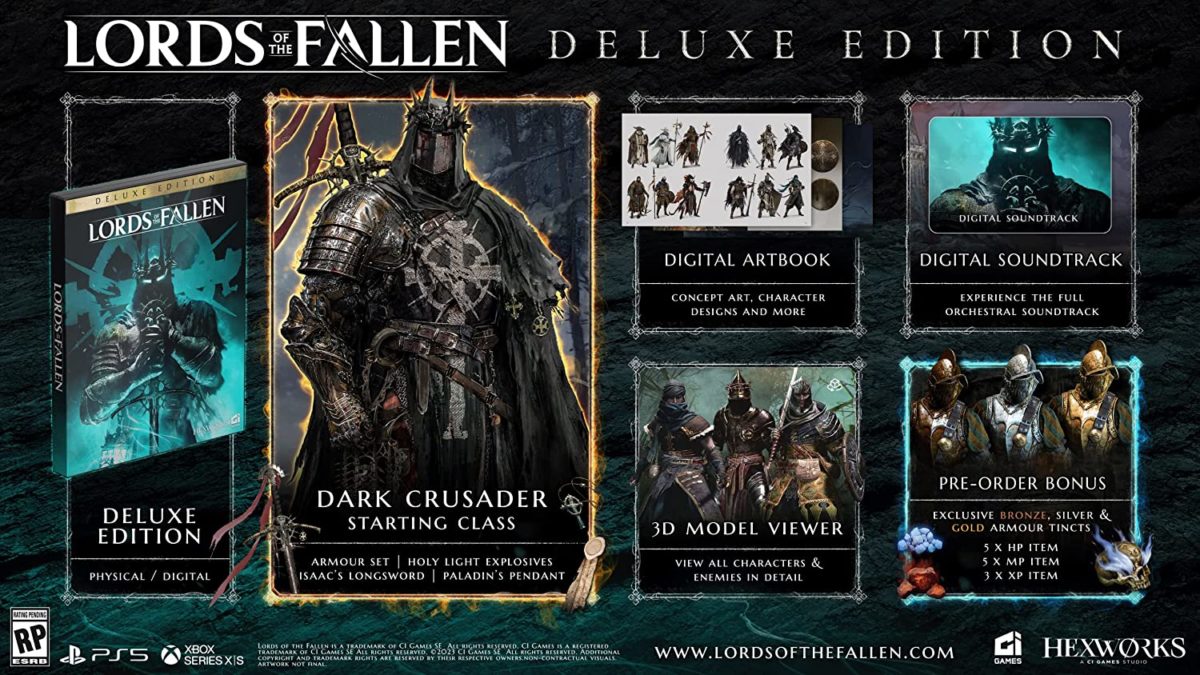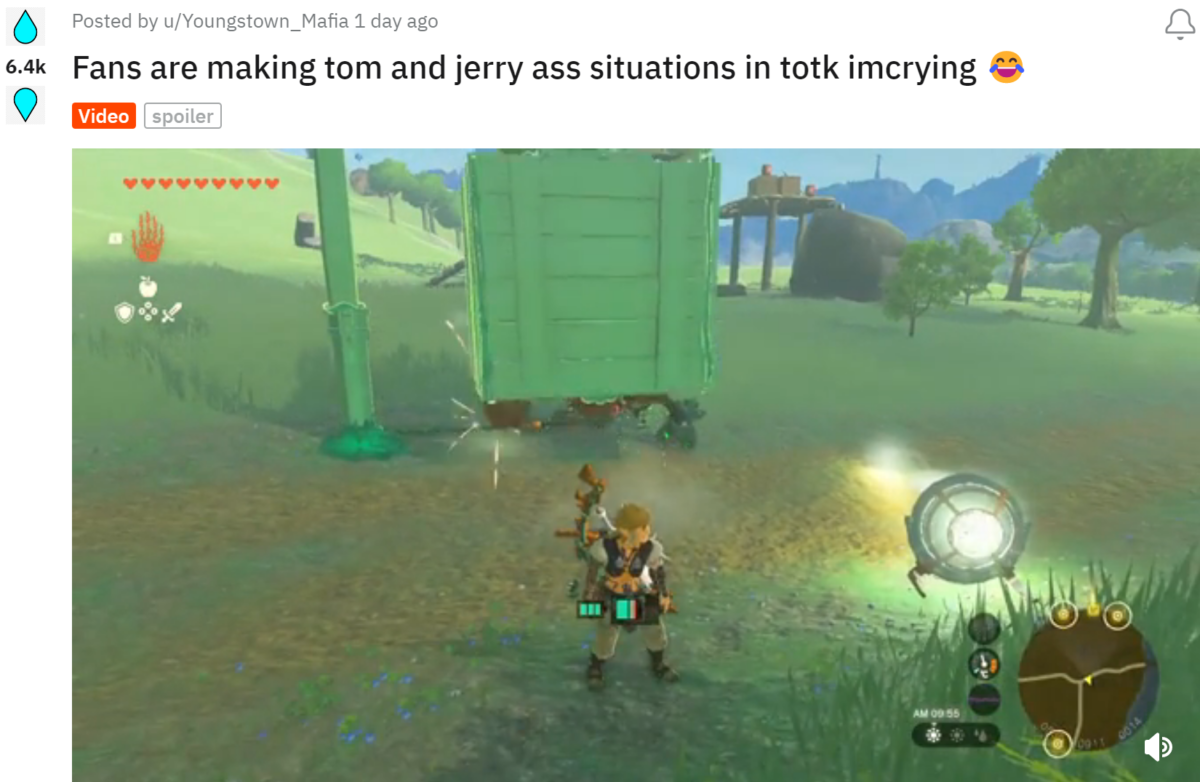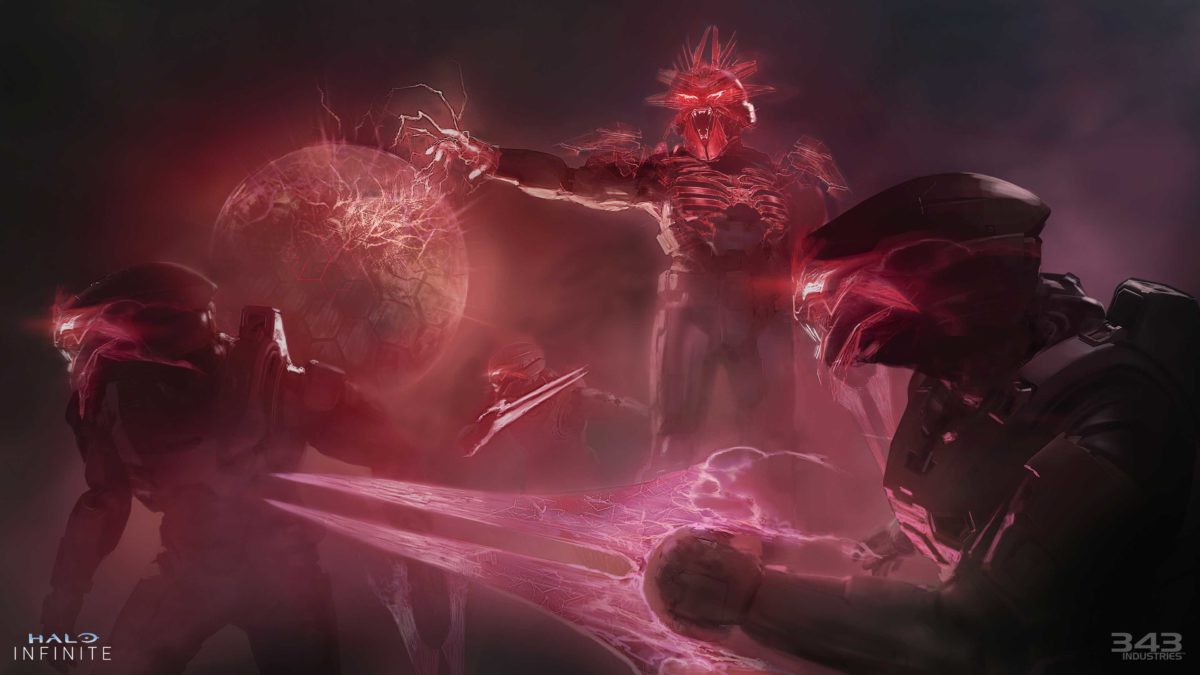Perhaps the ultimate dream of a ‘90s Metalhead nerd, Warhammer 40,000: Boltgun is the fusion of retro-style first-person shooters with the beloved sci-fi universe that birthed the term “grimdark.” It gets a lot of fun mileage purely from combining the aesthetics, sense of story, and level design of a game like Duke Nukem 3D or the original Doom with the rich library of character designs that 40K has built up in its 35 or so years of history. You’re a Space Marine Sternguard, a decorated elite who doesn’t say much, and you’re on loan to the scary and very mean imperial Inquisition. Your job is to kill everything between you and… whatever objective you’re currently after. Don’t think too hard – there’s not much of a plot here, just a whole lot of old-fashioned running and gunning.
Across three chapters and a few dozen levels you’ll cleanse, purge, and kill every single Chaos-worshiping heretic and daemon on the extremely brown-and-gray forge world of Graia. (Easter egg: That’s also the setting of 2011’s Warhammer 40,000: Space Marine, which technically makes this a spinoff-sequel to that story.) You’re guided along the way by a little Servo-Skull who, in a delightful play on the usual annoying floating companion archetype, just offers deadpan in-universe commentary on the world around you – mostly to note things like how a nearby stack of boxes is organized in an unapproved, likely heretical fashion. It’ll also point out room exits in confusing bits, albeit inconsistently.
The retro cred of Boltgun is undeniable, though I have to note that you can turn down the pixelation and tweak the color filter to make it simpler to see what’s going on. That’ll leave you with more of a low-poly shooter with smooth textures and 2D sprite enemies if you for some reason are a mutant that prefers crisp lines and unmuddled distance views. For my part, I quite liked the visual filters and found the pixel style improves Boltgun’s look and feel.
It takes something like eight to 10 hours to beat the campaign, which starts a bit slow but ramps up quickly into a strong middle section, and ends on a spree of unremarkable end levels that’re punctuated with some really unexpected and fun gems. Like a lot of retro-shooters, Boltgun is probably best enjoyed by those who’re interested in challenging its hardest difficulties. That means getting the hang of the run-and-gun combat and movement abilities in a bid to master level layouts and weapon types – something that the weapons in Boltgun lend themselves well to, as each has a special job to do.
Speaking of weapons, there are eight of those plus your chainsword, which you can mash the button to rev in melee and make your enemies explode into strawberry jam. I was a particular fan of the sticky grenade-firing Vengeance Launcher (making its triumphant return from Space Marine) and the Heavy Bolter which, in true retro-shooter fashion, never requires a reload – it just keeps firing until your ammo pool is dry. Also of note are the long-range plasma gun, the cone-shaped blast of the melta gun, and the precision beam of the volkite caliver, all of which fill a useful niche in your arsenal.
Whether it’s the titular Boltgun, a nice shotgun, or the heavy-melting graviton gun, every weapon has a Strength stat and every enemy has one for Toughness. Weapons of lower Strength than a target’s Toughness deal much less damage, while more powerful weapons punch right through baddies. That means you need to adjust on the fly, making sure to conserve high-strength ammunition for high-toughness enemies – and know when to bust out the big guns to clear a crowd of mid-level baddies before they swamp you. If this sounds familiar to you then you probably play tabletop Warhammer and will deeply appreciate this level of commitment to the bit.
Speaking of commitment: You have health in Boltgun, but you don’t have armor – you have Contempt. It’s a touch that’s deliciously suitable to the fanatical hyper-zealot warrior-monks that the Space Marines are and a nice callback to the infamous Space Marine mantra “My armour is contempt, my shield is disgust, my sword hatred. In the Emperor’s name, let none survive.”
And there sure are a lot of baddies to un-survive. Boltgun rarely seems afraid to throw big hordes at you, even in small spaces: several times per level you’ll hit a large space and the screen will tint red, indicating that you’ve entered “Purge Mode” and therefore are locked into a combat arena. This is where Boltgun shines, asking you to make the most of your superhuman jumps, sprints, charges, and immunity to fall damage to evade and obliterate overwhelming odds. Purge Mode enemies will keep spawning until you knock out a few key enemies – often the toughest ones like bigger Daemons, Chaos Terminators, and boss monsters.
They’re generally good enemies, to be honest. Nicely balanced between ranged and melee, they require you to switch tactics: No running around in the open against Chaos Terminators and their long-range autocannons, for example. Or the absolute jerks that are Chaos Champions, furious melee combatants who, when killed in any way that doesn’t turn them into giblets, will pray to their dark gods for a chance to return to life. There’s also a few with good, weird powers thrown in – like Pink Horrors, who become two Blue Horrors when killed. Delightful and true to 40K canon!
I also enjoyed the handful of bosses, and even when they repeated they were pretty nasty to fight: I always found it handy to find a secret cache with a vortex grenade and kept it on-hand for those occasions. Nothing ends a greater daemon’s day like a tiny black hole that’s also a portal straight back to space Hell.
There are just two problems with the horde of bad guys. The first is that enemies are stupid as rocks, generally content to let you gun them down from range if they can’t see you or get to you. It feels especially bad when it’s a melee enemy. They don’t even try to hide, which takes some of the satisfaction out of a kill. For many people, especially challenge-seekers, the braindead AI is where this game will risk losing them.
The other problem is that by halfway through the campaign you’ll have seen the last of the new enemy types and even bosses – there’s not more than 20 in total. Even obvious enemy variations would have been welcome: Every single Chaos Space Marine you fight is carrying the same boltgun and grenades, with not one plasma or meltagun to be seen. Even stranger to me is that while you fight plenty of Daemons it’s always either Plague or Change monsters – never a mix of the two, which seems like it would have been an easy way to provide a bit of variety.
In theory, this scarcity of enemy types should be counterable with strong level design. That remedy works for most of Boltgun, but by the end of the second chapter wandering corridors looking for colored keys starts to get a bit boring – a gameplay cliche I think we should have learned was a bad fit for this setting from 2003’s Warhammer 40K: Fire Warrior. It’s that connective tissue between those intense arena fights that starts to get a bit repetitive, and while there are secrets to try and find, none of them are particularly inventive – mostly just things hidden behind or inside a hexagonal grimdark shipping container. Not one illusionary wall to walk through or obtusely hidden door to discover (or if there are, I couldn’t find them).
To its credit, nearly every level has at least one standout part: you’ll battle through sprawling cathedral interiors, space defense cannons, forge complexes, and alien-dug caverns among others. I particularly liked one huge cathedral-like space with smaller churches suspended inside it, each of which had to be reached by jump pads. There’s also a great level set in a huge foundry where you fight up one side of a river of molten goop, then down the other.
There are some real standout levels here, too. The huge elevator on the orbital Crown station is a giant, repeated arena fight in a complex multi-level structure that I loved leaping and climbing around as I fought. As a rule I’ve always hated levels that are one giant elevator, but Boltgun can now proudly claim to be the exception that proves it.









